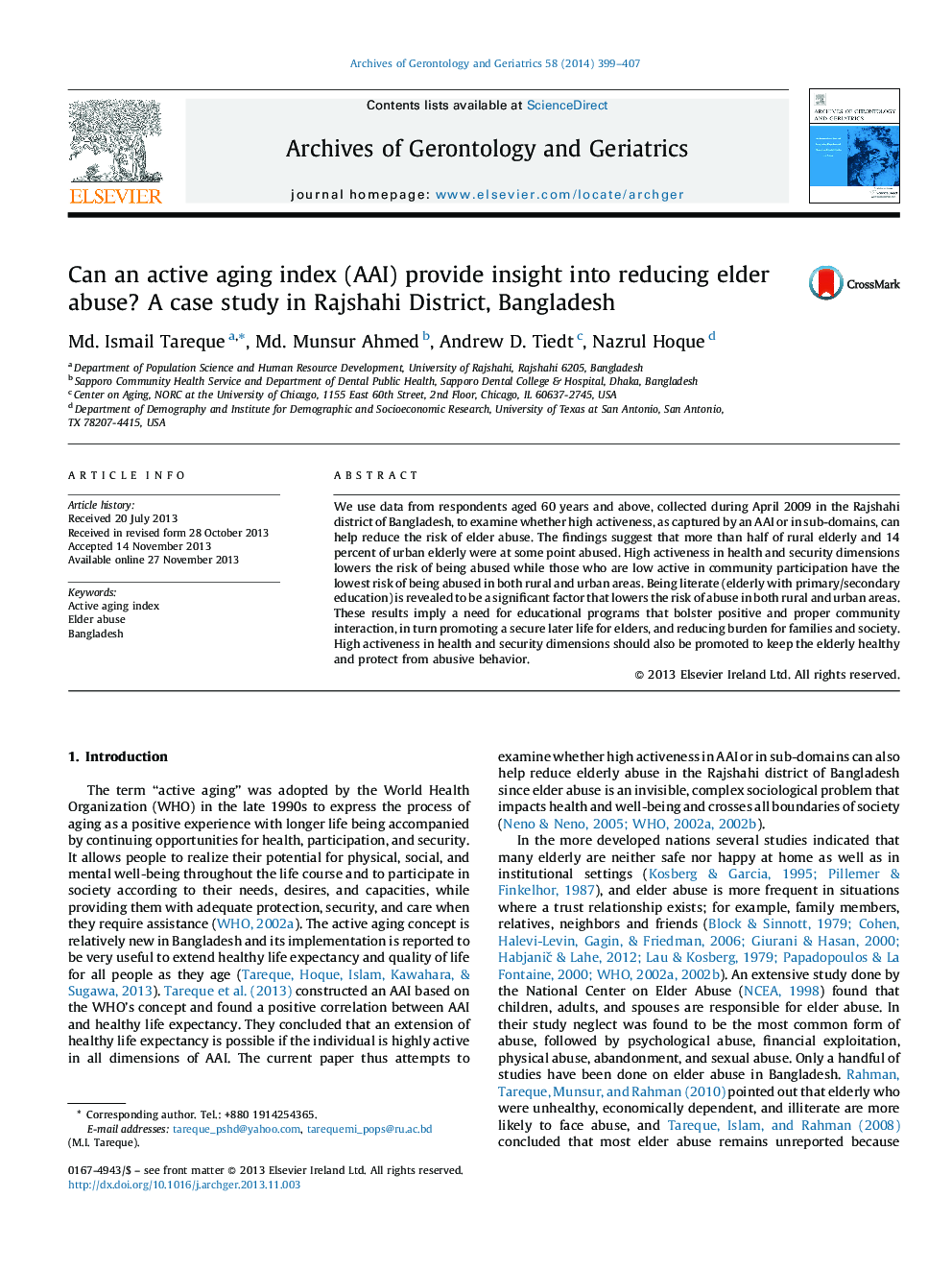| Article ID | Journal | Published Year | Pages | File Type |
|---|---|---|---|---|
| 8257929 | Archives of Gerontology and Geriatrics | 2014 | 9 Pages |
Abstract
We use data from respondents aged 60 years and above, collected during April 2009 in the Rajshahi district of Bangladesh, to examine whether high activeness, as captured by an AAI or in sub-domains, can help reduce the risk of elder abuse. The findings suggest that more than half of rural elderly and 14 percent of urban elderly were at some point abused. High activeness in health and security dimensions lowers the risk of being abused while those who are low active in community participation have the lowest risk of being abused in both rural and urban areas. Being literate (elderly with primary/secondary education) is revealed to be a significant factor that lowers the risk of abuse in both rural and urban areas. These results imply a need for educational programs that bolster positive and proper community interaction, in turn promoting a secure later life for elders, and reducing burden for families and society. High activeness in health and security dimensions should also be promoted to keep the elderly healthy and protect from abusive behavior.
Keywords
Related Topics
Life Sciences
Biochemistry, Genetics and Molecular Biology
Ageing
Authors
Md. Ismail Tareque, Md. Munsur Ahmed, Andrew D. Tiedt, Nazrul Hoque,
